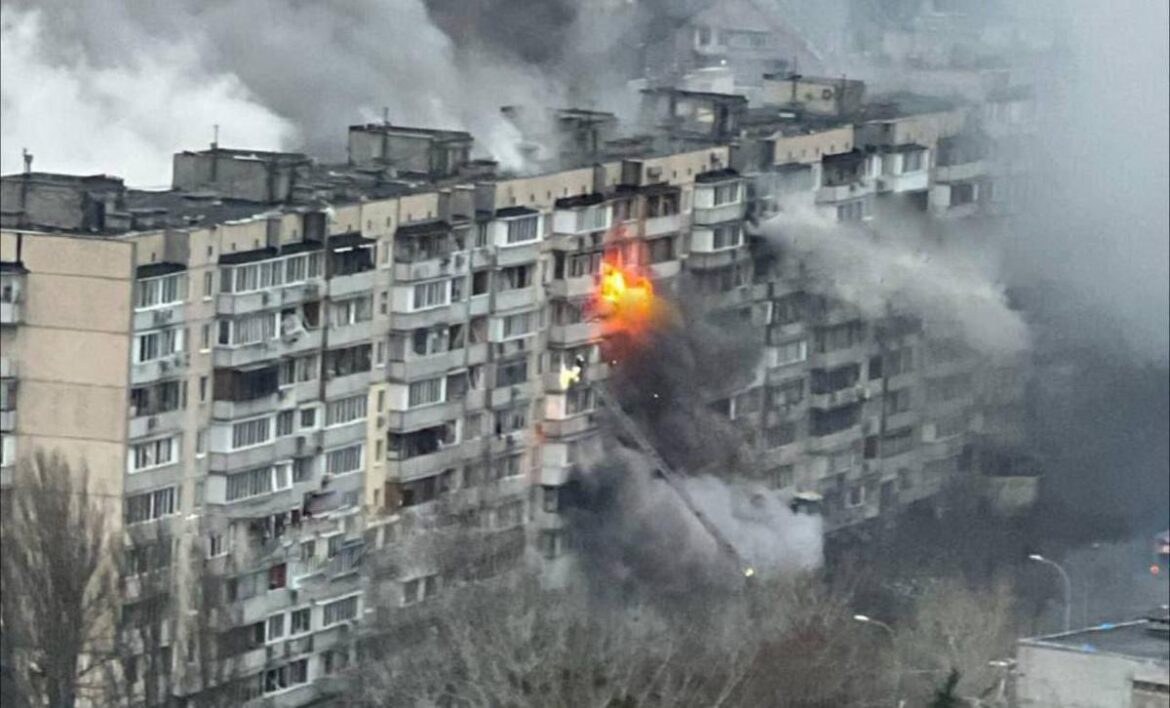In one of the most intense overnight offensives in months, Russia unleashed over 620 drone and missile attacks across Ukraine, according to official reports released Saturday. The barrage left at least four people dead and injured scores more, pushing Ukraine’s president Volodymyr Zelenskyy to demand urgent action—including tougher sanctions and aerial defense support—from international partners.
Scale and Spread: A Night of Unrelenting Attacks
On Friday night into early Saturday morning, explosions and air raid sirens swept across multiple regions of Ukraine. Russia launched what has been described as a widespread aerial assault, reportedly deploying 597 attack drones and 26 cruise missiles targeting cities from the east to the country’s western borders:
- Kharkiv and Sumy in the northeast took direct drone hits.
- Lviv and Bukovyna in the west also came under missile fire.
- Dnipropetrovsk and Chernivtsi saw fatalities and injuries from the strikes.
In total, four Ukrainians were killed—two in Dnipropetrovsk, two in Chernivtsi—and over two dozen wounded, including six civilians in Lviv and three in Kharkiv.
Official Response: Zelenskyy’s Call to Action
President Zelenskyy’s social media message was blunt and deeply urgent. Posting on X (formerly Twitter), he did not mince words:
“Last night, Russia’s strikes extended from the Kharkiv and Sumy regions to the Lviv region and Bukovyna. 26 cruise missiles and 597 attack drones were launched, more than half of them were ‘shaheds.’ More than 20 missiles and the vast majority of drones were destroyed. I thank our air defense forces for this result.”
But gratitude was quickly followed by an unmistakable demand for stronger international measures:
“The pace of Russia’s aerial strikes demands swift decisions – and it can be curbed through sanctions right now. Tough secondary sanctions are needed against everyone helping the Russians produce drones and profiteer from oil… We expect not just signals from our partners, but actions that will save lives.”
This wasn’t just a call for diplomatic reprimands. Zelenskyy pointed to a need for concrete military aid: interceptor drones, air defense systems, and investments in surveillance infrastructure.
Timeline of Events: Escalation in Hours
The strikes marked a sharp spike in hostilities just as diplomatic discussions mediated by the U.S. have effectively stalled. Here’s how the surge unfolded:
- Friday Morning: Ukrainian drone and shelling attacks were reported along the Russian border, leading to the deaths of three individuals in Russia.
- Friday Night: Russian forces launched a coordinated wave of drones and missiles at multiple Ukrainian regions.
- Saturday Morning: Ukrainian officials report casualties and damage; air defense units intercept majority of airborne threats.
This back-and-forth of strikes and retaliations reflects a familiar yet increasingly severe pattern in the later stages of the war.
Russia’s Defense Ministry Confirms Aims
Moscow has confirmed targeting military-industrial infrastructure in several Ukrainian cities, including Lviv, Lutsk, and Kharkiv. In Lviv, the ministry claimed it successfully hit a military airfield, while similar actions were taken in Kharkiv and Lutsk.
The allegations were coupled with a statement defending its choice of targets as strategic and designed to “degrade Ukrainian military capabilities.” Independent verification of the exact targets hit remains limited, as of publication.
Community Response from Across Ukraine
On the ground, civilians in Ukraine expressed a mixture of psychological strain and cautious resilience. Social feeds out of Lviv and Kharkiv showed smoke-plumed daylight, burned infrastructure, and emergency crews attending to damaged buildings.
Anna Kostyuk, a teacher currently living in Lviv, wrote in a personal blog, “The kids were terrified again last night. We went to the basement just after 2 AM… there’s a constant unease now. You can’t really sleep fully anymore.”
Despite the high interception rate by Ukraine’s defense systems, fear and confusion have not been intercepted. The strikes reached parts of Ukraine previously considered remote from the worst of the warfronts—underscoring the reach of Russian aerial capabilities.
U.S.-Mediated Peace Talks Stuck in the Mud
The escalation came during a time when peace talks, mainly led by U.S. intermediaries, have suffered stalemates. Skepticism around any near-term breakthrough continues to grow, as both nations dig in and the conflict nears its fourth year.
As one Kyiv-based analyst noted off the record, “There’s almost no breathing room left politically. Every strike sets talks back by days or even weeks… Everyone now expects the worst before anything better.”
What’s Next? Calls for International Responsibility
In the wake of the strikes, Zelenskyy’s office is reportedly preparing formal appeals for secondary sanctions. These would target supply chains believed to be enabling the manufacture of Iranian-style drones that Russia uses, known as “shaheds.”
Alongside financial hits, Ukraine is lobbying for:
- Advanced air defense systems from NATO countries.
- Investment in Ukraine’s homegrown drone interception technology.
- Real-time satellite intelligence on suspected drone launch sites.
This approach, they argue, could protect civilian zones and infrastructure from continued waves of aggression.
It’s unclear yet how Washington, Brussels, or London will respond. While statements of solidarity have been frequent over the past year, Ukraine’s demands are now moving from words to weapons—as the president put it himself: “We expect not just signals from our partners, but actions that will save lives.”
Final Thoughts
For many Ukrainians, this latest barrage was a chilling reminder that dense city centers are still far from safe. And while models predict conflict fatigue globally, the facts on the ground remain sharp: missiles are flying, and people are dying. Whether international responses will catch up with military realities is, for now, the unanswered question.

